As e-Commerce continues to expand at an unprecedented rate, fulfillment has become a critical factor for success. For growing e-commerce businesses, a seamless fulfillment process isn’t just about getting products to customers; it’s about efficiency, accuracy, and customer satisfaction. Yet, many online retailers face challenges around shipping costs, seasonal demand, and aligning fulfillment with customer expectations.
If you’re aiming to optimize your operations, meet customer demands, and scale effectively, here are some smart fulfillment strategies to implement.
Common Fulfillment Challenges in E-commerce
Before we explore solutions, it’s important to recognize the roadblocks that growing e-commerce businesses often face:
- Rising Shipping Costs: With increasing carrier fees, maintaining profitability can feel like an uphill battle.
- Demand Fluctuations: Seasonal peaks are fantastic for revenue but challenging for fulfillment scalability.
- Order Errors: Mistakes in order picking or shipping can frustrate customers and erode trust.
- Fast Delivery Expectations: Thanks to giants like Amazon, “fast” no longer means five days but closer to one or two.
- Platform Integration: Many e-commerce businesses struggle with seamlessly linking fulfillment with their online stores.
- Returns and Reverse Logistics: Handling customer returns can be costly and time-consuming without the right processes in place.
The good news? These challenges can be tackled with the right strategies.
Fulfillment Strategies to Scale Your E-commerce Business
1. Optimize Warehouse Layout for Efficiency
A well-organized warehouse is the backbone of a robust fulfillment strategy. Optimize your layout to reduce travel time for pickers and streamline the movement of goods. Some tips:
- Group frequently picked items together.
- Implement a logical flow that moves from receiving to storage, picking, packing, and shipping.
- Use vertical storage solutions to maximize space.
By cutting down the time it takes to locate and prepare orders, you’ll improve fulfillment speed and accuracy.
2. Implement Real-time Inventory Management
Out-of-stock items can cost you sales and damage your reputation. Real-time inventory management allows you to track stock levels across all sales channels instantly. Invest in software solutions that update inventory as soon as a sale is made, alert you when stock is running low, and ensure accurate reflections across your platform.
Tools like Shopify, TradeGecko, or Cin7 can sync directly with your e-commerce store for seamless operations.
3. Diversify Fulfillment Options
Giving yourself flexibility with fulfillment models can help manage costs, improve scalability, and meet customer expectations. Options include:
- Dropshipping: Outsourcing inventory and shipping to suppliers eliminates the need for in-house storage but might limit control over delivery timelines.
- Third-party Logistics (3PL): Partnering with a 3PL provider can take care of warehousing, inventory management, and shipping, freeing up time to focus on core business growth.
- Hybrid Models: Combine in-house fulfillment with 3PL or dropshipping for specific product lines, offering flexibility and cost-management.
Diversification ensures you’re prepared to handle growth and fluctuating customer demand effectively.
4. Automate Order Processing and Tracking
Manual workflows can slow your operations and lead to human errors. Automation tools help streamline order processing by sending customer orders from your online store directly to your fulfillment center or warehouse. Advantages of automation include:
- Faster order processing
- Real-time tracking updates sent to customers
- Fewer administrative delays and mistakes
Look for platforms like ShipStation, ShipBob, or Ordoro to integrate automation seamlessly into your operations.
5. Enhance Last-Mile Delivery
Last-mile delivery plays a significant role in customer satisfaction. Late or inaccurate deliveries can result in negative reviews and loss of repeat business. To meet fast delivery expectations:
- Partner with reliable carriers that specialize in last-mile delivery.
- Use route optimization tools to plan the most efficient delivery paths.
- Enable real-time tracking so customers can monitor their orders.
Offering options like same-day or next-day delivery may seem challenging but can set your business apart from competitors.
6. Leverage Data Analytics for Continuous Improvement
Data analytics help you monitor performance, spot inefficiencies, and make data-driven decisions. By analyzing order fulfillment times, delivery success rates, and return trends, you’ll uncover valuable insights to refine your strategies.
For example:
- Identify patterns in seasonal surges to prepare your stock and team in advance.
- Use data to pinpoint high-error zones in your fulfillment process and address them.
With actionable insights, you can keep improving and scale your operations more effectively.
Building a Fulfillment Process for Long-term Growth
Growing your e-commerce business means preparing not only for the present but also for the future. Address challenges head-on with a combination of technology, strategic partnerships, and efficiency-driven processes. Investing in tools and platforms that integrate seamlessly with your e-commerce store and automating labor-intensive tasks is essential as you scale.
By implementing the strategies discussed—like optimizing your warehouse layout, leveraging real-time inventory tools, and enhancing last-mile delivery—your business will be well-positioned to meet customer expectations while maintaining profitability.
We Want To Talk To You About Your Marketing Goals.
Let’s Supercharge Your Online Growth!












